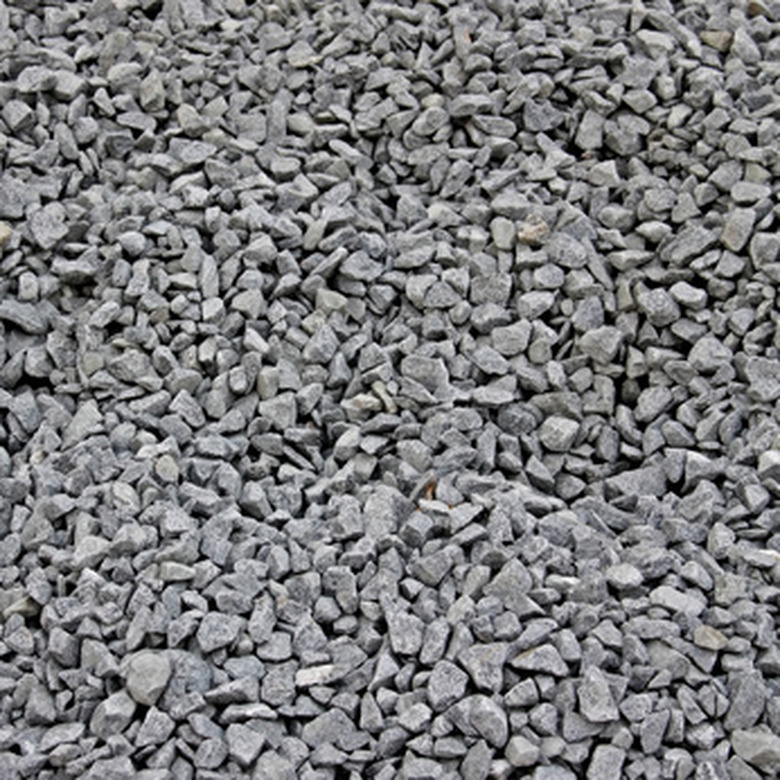How To Make Rock & Gravel Driveways
Things Needed
-
Tractor-mounted blade
-
Geotextile fabric
-
Baseball-sized gravel
-
Golf-ball-sized gravel
Tip
Topsoil can be spread on the ditch surfaces to aid in vegetation growth but keep the ditch deep enough to carry any rain or spring snowmelt away from the road. The steps of building a gravel road can be accomplished with a tractor and blade and loader.
Warning
Gravel roads require blading periodically to maintain the crown of the road. The road surface should slope towards the ditches with no "potholes" that accumulate standing water which will soak into the road and cause damage. Verify that building or environmental permits are not necessary before starting construction. In some areas a permit is needed to establish the approach or connection with the main road.
Gravel driveways are common in rural America. The roads often contain a mix of small stones, clay, sand and other materials. Pit gravel, gravel material as it is removed from the pit or quarry, is usually crushed to a consistent size before use. Gravel driveways are usually more economical to build than paved roads and can be maintained with simpler equipment that a rural homeowner may possess.
Step 1
Remove topsoil and any organic material from the path of the road. Include the area adjacent to the road that will serve as a road ditch. Stockpile the topsoil for use in reclaiming the ditches after the road is constructed. Remaining topsoil can be used for other landscaping projects.
Step 2
Create drainage ditches along the side of the road. Use a blade or scraper to remove the subsoil from what will be the ditch and pile it onto the road area. Pack this material to create an elevated roadbed. Slope the ditches so water drains away from the road.
Step 3
Place a fabric barrier on top of the subsoil base. The fabric serves as a barrier between the subsoil and the gravel which will be placed on top of it. The barrier limits silt from traveling between the two materials. Geotextile fabric is porous, allowing water to pass through but holding silt and other materials in place. Sometimes called road fabric, it is available through specialty Internet outlets and road contractors.
Step 4
Add a layer of large crushed gravel. Use baseball-to-softball-sized rocks to create a 4-inch thick layer of rock above the subsoil base. Add a layer of smaller gravel, golf-ball-size or smaller, to the layer of large rock. Many roads use smaller rock, sometimes as small as peas, in the top layer. Total thickness of the two layers should be about 11 inches.
Step 5
Shape the crown of the road to provide a slope from the center line to the ditches on each side. This provides drainage to clear water from the road to the ditches before it can be absorbed by the road and cause damage.
